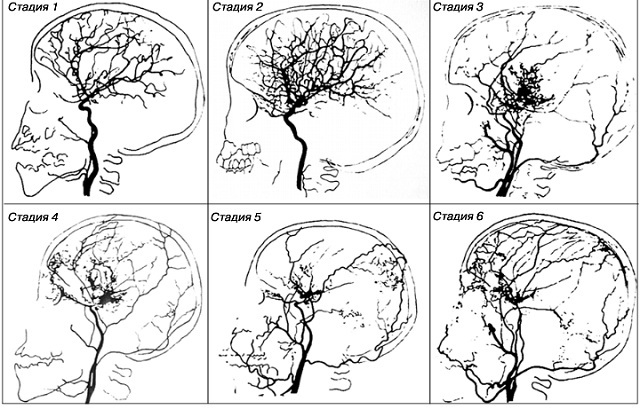Glomerulonephritis - damage immune kidney glomeruli.
By the nature of the flow glomerulonephritis can be acute or chronic.

Causes
- (infectionangina, scarlet fever, infective endocarditis, sepsis, Pneumococcal pneumonia, typhoid fever, meningococcal infection, viral Hepatitis B, Infectious mononucleosis, parotitis, chicken pox, Infections caused by the Coxsackie virus, etc.)
- Systemic diseases: systemic lupus lupus, Vasculitis, Johann Lukas Schönlein -Genoha disease, hereditary pulmonary-renal syndrome
- The introduction of vaccines, serums
- Toxic substances (organic solvents, alcohol, mercury, lead, etc.).
- Irradiation et al.
Glomerulonephritis manifested through 1-4ned. after exposure to a provoking factor.

manifestations of glomerulonephritis
- Blood in the urine - urine color "meat slops"
- Facial edema (especially c), and the feet and legs
- Increased blood pressure
- Reducing the amount of urine, thirst
- Increase in body temperature (rare)
- Lack of appetite, nausea, vomiting, headacheweakness
- Weight gain
- Dyspnea
Depending on the various forms of glomerular injury may dominate certain manifestations of glomerulonephritis.
Acute glomerulonephritis develops after 6-12 days after a previous infection, usually streptococcal (angina, tonsillitis, Scarlet fever), including the skin (pyoderma, impetigo).
The disease can develop after other infections - bacterial, viral, parasitic and other antigens after effects - serum, vaccines and medicines.
In the classical cyclic during acute glomerulonephritis characterized by changes in urine (red urine due to blood impurities), edema, a decrease in urine output.
Diagnostics
- General urine analysis. In the urine - erythrocytes, leukocytesCylinders, protein
- Urine specific gravity normal or elevated
- The increase in antibody titer to streptococcus in the blood (antistreptolysin-O, Antistreptokinaza, antigialuronidaza)
- Reduction of the SOC complement component C4 in the serum with a return to baseline levels in 6-8 weeks with acute post-streptococcal glomerulonephritis; with membranoproliferative glomerulonephritis these changes persist lifelong
- The total protein content in serum decreased in proteinogram - raising A1 and a2-globulins
- renal ultrasound
- radioisotope angiorenografiya
- ECG
- Ocular fundus
- kidney biopsy allows to specify the morphological form of chronic glomerulonephritis, its activity, eliminate kidney diseases with similar symptoms
treatment of glomerulonephritis
- Hospitalization in the department of nephrology
- bed rest
- 7A Diet: limitation proteins at salt limit edema, hypertension
Antibiotics (acute post-streptococcal glomerulonephritis or presence of foci of infection)
Immunosuppressants and corticosteroids are ineffective at postinfection, poststreptococcal acute glomerulonephritis.
Immunosuppressive therapy - glucocorticoids and cytotoxic agents - an exacerbation of chronic glomerulonephritis.
glucocorticoids
mesangioproliferative indicated for chronic glomerulonephritis and chronic glomerulonephritis with minimal change glomerular. When chronic membranous glomerlonefrite fuzzy effect.
When chronic membranoproliferative glomerulonephritis, and focal segmental glomerulosclerosis glucocorticoids ineffective.
prednisolone
administered 1 mg / kg / day orally for 6-8 weeks, followed by a rapid decrease to 30 mg / day (5 mg / week) followed by slow (2,5-1,25 mg / week) until the complete cancellation.
Prednisolone pulse therapy is carried out at high activity CGN in the first days of treatment - 1000 mg / drip 1 r / d 3 consecutive days. After reducing the activity of chronic glomerulonephritis may conduct monthly pulse therapy to achieve remission.
cytostatics
- cyclophosphamide, 2-3 mg / kg / day PO / m or / in,
- chlorambucil of 0.1-0.2 mg / kg / day by mouth,
as alternative preparations:
- Cyclosporin - at 2.5-3.5 mg / kg / day by mouth,
- azathioprine at 1.5-3 mg / kg / day orally)
they are indicated for active forms of chronic glomerulonephritis with a high risk of progression of renal failure, as well as with contraindications for the destination glyukokrtikoidov, inefficiency, or the appearance of complications in the application of the latter (in the latter case, the preferred combined application that allows to reduce the dose glucocorticoids).
Pulse therapy with cyclophosphamide shows high activity chronic glomerulonephritis or in combination with pulse therapy with prednisone (or prednisolone background of daily use) or in isolation without additional destination prednisolone; in the latter case cyclophosphamide dose should be 15mg / kg (or 0.6 to 0.75 g / m2 of body surface) in / month:
Multicomponent regimens
Concomitant use of glucocorticoids and cytotoxic drugs is considered effective monotherapy glucocorticoids. It is generally accepted to appoint immunosuppressive drugs in combination with antiplatelet agents, anticoagulants - the so-called multi-scheme:
- 3-component scheme (without cytostatics): Prednisolone 1 - 1.5 mg / kg / day orally 4-6 weeks, followed by 1 mg / kg / day every other day, then reduced to 2,5 1,25 mg / week to cancel + heparin 5000 U 4 p / d for 1 -2 months transition to phenindione or acetylsalicylic acid dose 0,25-0,125 g / day, or sulodexide in a dosage of 250 ME 2 times / day orally Dipyridamole + 400 mg / day orally or /.
- 4-component diagram Kinkayd Smith prednisolone 25-30 mg / day orally for 1-2 months, and then at a reduced dose of 1.25-2.5 mg / week to cancel + Cyclophosphamide 100-200 mg for 1 - 2 months, and then half the dose to achieve remission (cyclophosphamide, chlorambucil can be replaced or azathioprine) + Heparin 5000 U 4 / day for 1-2 months with a transfer to or phenindione acetylsalicylic acid or sulodexide Dipyridamole + 400 mg / day orally or in /.
- Pontichelli scheme: initiation of therapy with prednisolone - 3 consecutive days with 1000 mg / day, 27 days following prednisolone 30 mg / day by mouth, 2nd month - chlorambucil 0.2 mg / kg (interlace prednisolone and chlorambucil).
- Driving Steinberg - pulse therapy with cyclophosphamide 1000 mg / per month throughout the year. In the next 2 years - 1 every 3 months. In the next 2 years - 1 time in 6 months.
Antihypertensive therapy: captopril is 50-100 mg / day enalapril 10-20 mg / day, 2.5-10 mg of ramipril / day
Diuretic - hydrochlorothiazide, furosemide, spironolactone
Antioxidant therapy (Vitamin E), but strong evidence of its efficacy is lacking.
Lipid preparations (nephrotic syndrome): simvastatin, lovastatin, fluvastatin, atorvastatin 10-60 mg / day for 4-6 neds subsequent dose reduction.
Antiplatelet agents (in combination with glucocorticoids, cytostatics, anticoagulants; cm. above). Dipyridamole 400-600 mg / day. Pentoxifylline of 0.2-0.3 g / day. Ticlopidine 0.25 g 2 r / d
plasmapheresis in combination with pulse therapy with prednisone and / or cyclophosphamide shown when highly chronic glomerulonephritis and no effect of treatment with these medications.
Surgery. Kidney transplantation is complicated in 50% relapse in the graft, at 10% - the reaction of transplant rejection.
Treatment of certain morphological forms
Chronic glomerulonephritis mesangioproliferative
When slowly progressive forms, including with IgA-nephritis, in immunosuppressive therapy required. At high risk of progression - glucocorticoids and / or cytostatics - 3- or 4-component circuit. Effect of immunosuppressive therapy on distant prognosis remains unclear.
Membranous glomerulonephritis chronic
Combined use of glucocorticoids and cytostatics. Pulse therapy with cyclophosphamide 1000 mg / per month. In patients without nephrotic syndrome and normal renal function - ACE inhibitors.
Membranoproliferative (mesangiocapillary) chronic glomerulonephritis
Treatment of the underlying disease. ACE inhibitors. In the presence of nephrotic syndrome and renal functions decrease justified glyukokrtikoidami therapy with cyclophosphamide and by the addition of antiplatelet agents and anticoagulants.
Chronic glomerulonephritis with minimal changes
Prednisolone 1 - 1.5 mg / kg for 4 weeks, then - 1 mg / kg every other day 4 more weeks. Cyclophosphamide, chlorambucil or the ineffectiveness of prednisolone or can not be canceled due to relapses. With continuing relapses of nephrotic syndrome - cyclosporin 3-5 mg / kg / day (children of 6 mg / m2) after 6-12 months of remission.
Focal segmental glomerulosclerosis
Immunosuppressive therapy is not effective enough. Glyukokrtikoidy prescribe long - up to 16-24 weeks. Patients with nephrotic syndrome, prednisolone to 1 - 1.2 mg / kg daily 3-4 months, then every other day 2 more months and then the dose is reduced until canceled. Cytostatics (cyclophosphamide, cyclosporine) in combination with glucocorticoids.
Chronic glomerulonephritis Fibroplastic
When the source process treatment is carried out according to one of the morphological form, which led to his development. Diffuse form - contraindication to active immunosuppressive therapy.
clinical forms of treatment is carried out at inability to perform kidney biopsy.
- Latent form of glomerulonephritis. Active immunosuppressive therapy is not indicated. When proteinuria> 1.5 g / day is prescribed ACE inhibitors.
- Hematuric form of glomerulonephritis. Inconstant effect of prednisone and cytotoxic drugs. Patients with isolated hematuria and / or proteinuria small - ACE inhibitors and dipyridamole.
- Hypertensive form of glomerulonephritis. ACE inhibitors; target blood pressure - 120-125 / 80 mmHg In exacerbations cytostatics used in the composition of the 3-component scheme. Corticosteroids (prednisone 0.5 mg / kg / day) may be administered as monotherapy or in combination regimens.
- Nephrotic form of glomerulonephritis - indication for 3- or 4-component circuit
- Mixed form - 3-, or 4-component treatment regimen.



